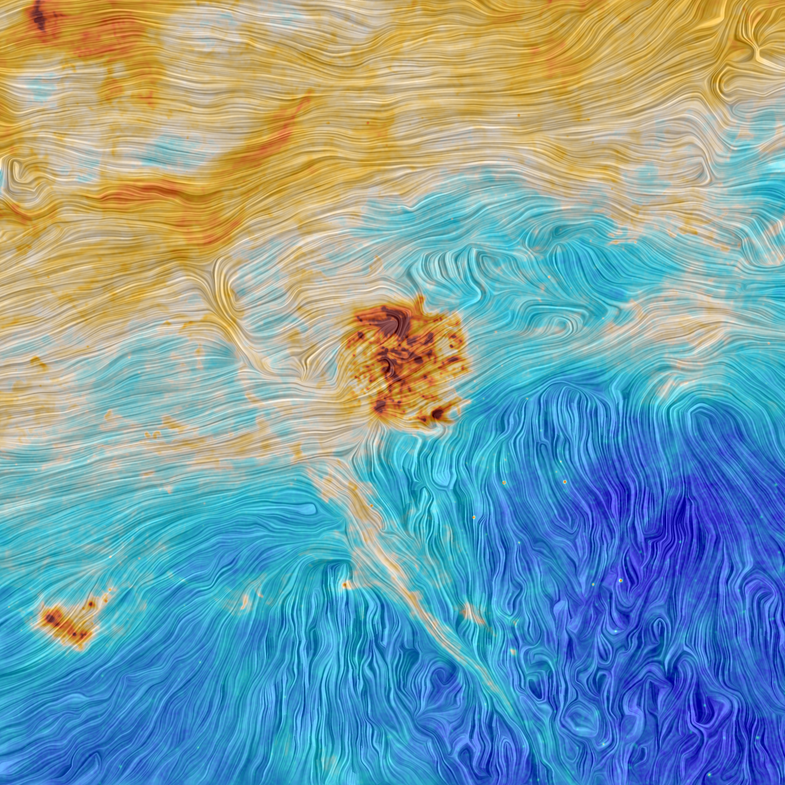Say Hello To Our Dwarf Galaxy Neighbors
These are the magnetic fields of the Magellanic Clouds

When the European Space Agency’s Planck Satellite was scanning the sky a few years ago, it gathered frequency data that produced this lovely image of the two Magellanic Clouds–two of our nearest dwarf galaxy neighbors.
The image, which ESA released this summer, shows a large dark orange blob near its center. That’s the Large Magellanic Cloud. It’s about ten billion times the mass of our sun, and about 160,000 light years away from our own Milky Way galaxy. The triangular blob in the left corner is the Small Magellanic Cloud, which is about seven billion times the mass of our sun and 200,000 light years away.
At the top of the image, the yellowish swirling clouds represent interstellar dust from the Chamaeleon constellation. From that cloud, a “dusty filament” that’s well-aligned with the galaxy’s magnetic field reaches down into the righthand corner. The mostly blue hues of the right corner indicate a low concentration of cosmic dust, as Planck sees it.
Planck launched in 2009 and used a Low Frequency Instrument and High Frequency Instrument to map the Cosmic Microwave Background in nine frequencies before it was switched off in 2013. The data it gathered could teach astronomers more about how stars form, and could help answer the big question of how the universe began.